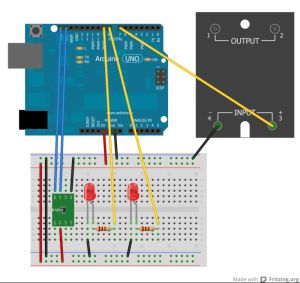In the previous post, I outlined some Arduino code to generate tide height predictions for a NOAA tidal reference station.
Now let’s do something useful with this newfound functionality. In the experiments I run, it’s useful to keep intertidal animals like snails and limpets on a natural tidal cycle. In addition, some animals like high-shore limpets really dislike being continuously submerged, and will crawl up out of the tank and die when they dry out. In this case, I built a “limpet splasher” system that sprays water in the aquarium for a few seconds at a time with pauses in between to simulate the wave beat, and shuts off completely during low tide. The code in this GitHub repository accomplishes this goal by activating a relay (hooked to a sprinkler solenoid) to spray water for a few seconds, pausing for 15 seconds, and then spraying again, simulating the splashing of waves. During low tide, no water flows.
The circuit uses a DS3231 real time clock (in the guise of a Chronodot) to provide the date and time, two LEDs to indicate low tide or when the relay is activated, and a solid state relay to interface with a common home garden sprinkler solenoid. The schematic is shown below.
To implement this in real life, I made a circuit board to piggyback onto an Arduino UNO. It holds the Chronodot, LEDs, and a terminal block to wire to a solid state relay. Here’s a pdf of the circuit board design, suitable for toner transfer.
For more detail: Using Arduino tide predictions


